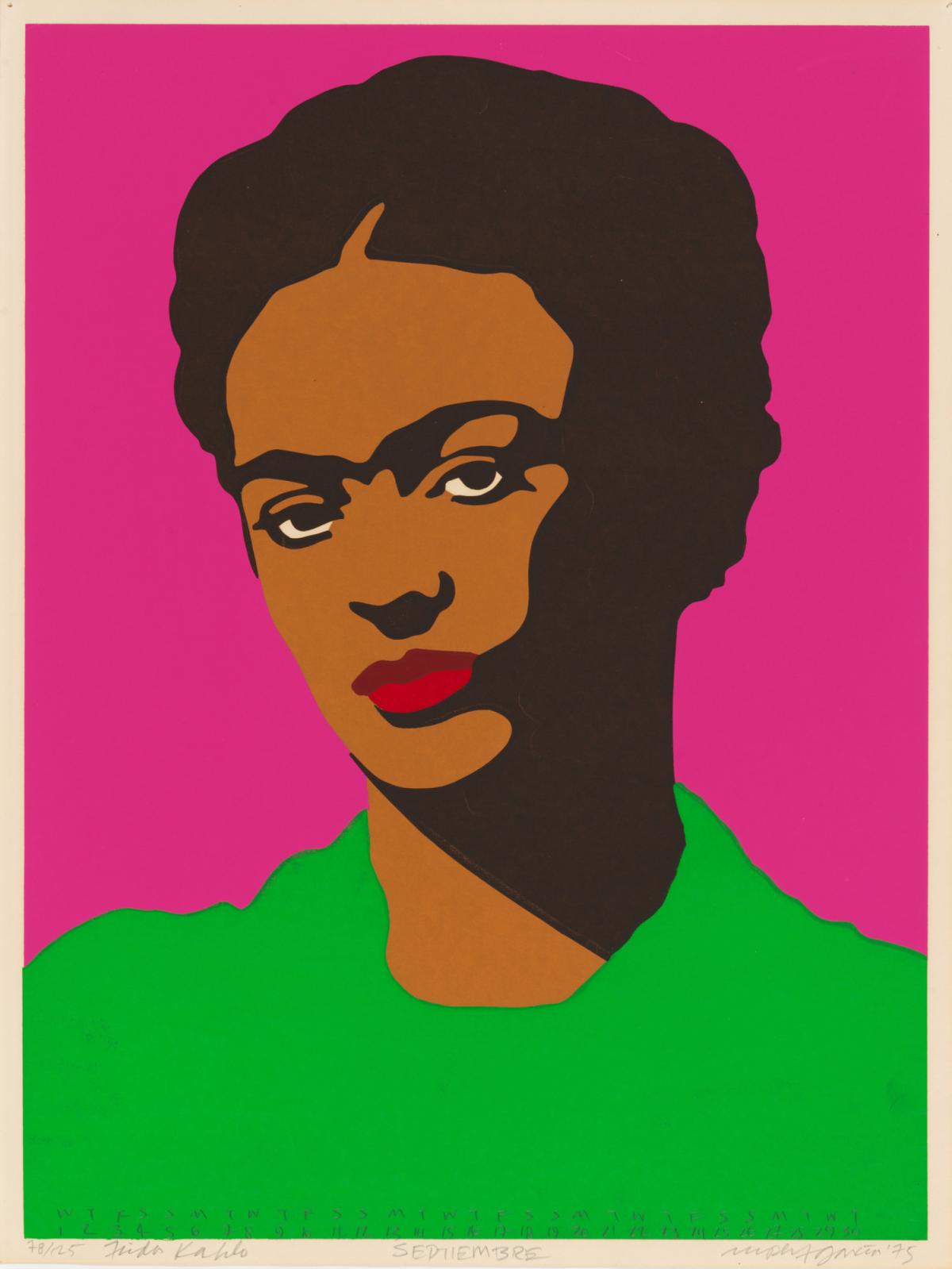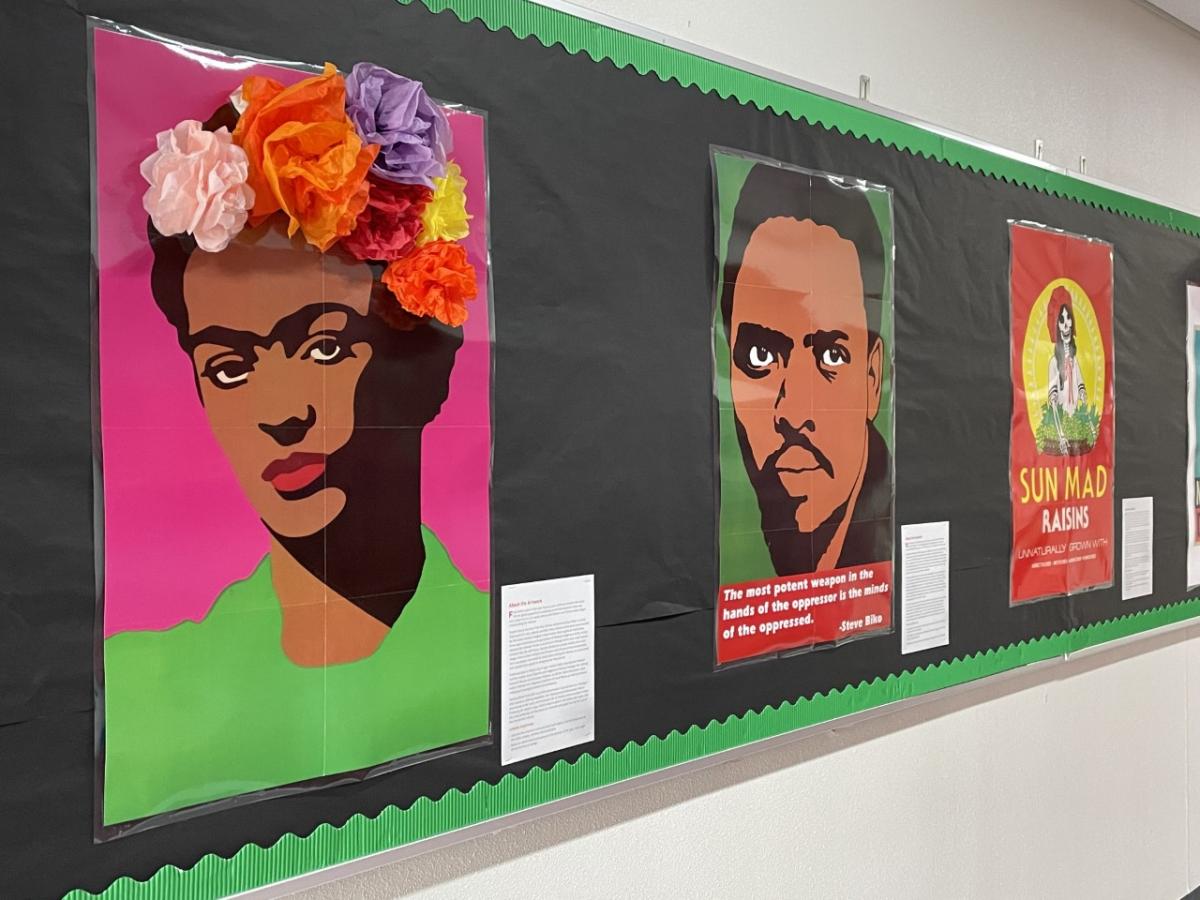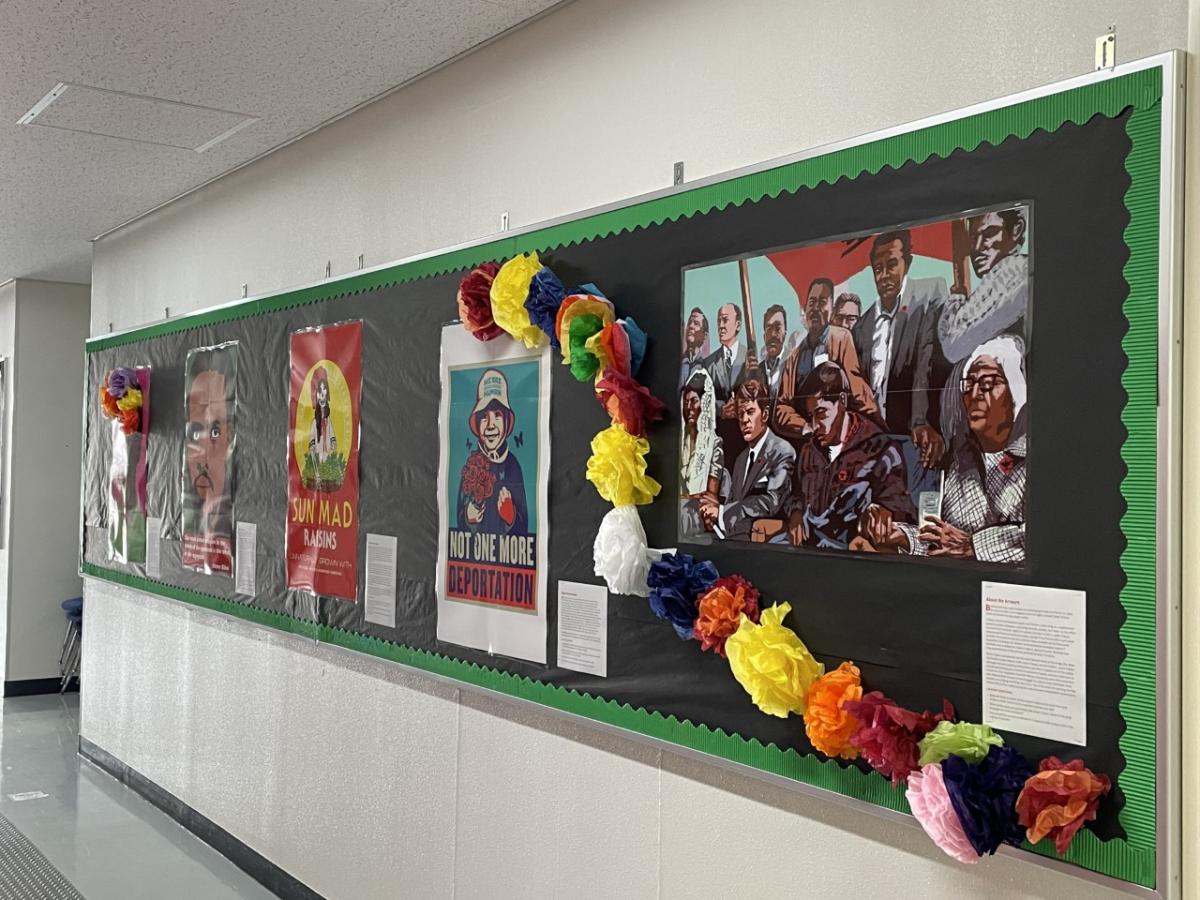
As the digital interpretation specialist in SAAM’s education department, part of my job is to figure out ways to share our collection beyond the physical walls of the museum. If you can’t come to SAAM, how can we come to you? One of my favorite answers for educators and students is classroom teaching posters. Inspired by the exhibition ¡Printing the Revolution! The Rise and Impact of Chicano Graphics, 1965 to Now, we created a set of teaching posters that feature five screenprints from SAAM’s leading collection of Latinx art. Along with a full color reproduction of the artwork itself, each poster includes text in Spanish and English with details about the artwork and the artist, discussion questions, interdisciplinary connections, and suggestions for student activities.
Thanks in large part to a social media post by artist Melanie Cervantes that highlighted this resource, we have received more than 10,000 poster requests from educators all over the world. Requests have come from all 50 states in the U.S., the District of Columbia, Puerto Rico, the U.S. Virgin Islands, Australia, Bermuda, Belize, Canada, Colombia, Costa Rica, England, Germany, Greece, Italy, Japan, Mexico, New Zealand, Peru, Romania, Scotland, Slovakia, South Africa, Spain, Sweden, and Taiwan. That’s twenty-two countries spanning every continent on earth except for Antarctica.
The teaching posters offer students an opportunity to learn about groundbreaking individuals like South African anti-apartheid activist Steve Biko, artist and feminist/queer icon Frida Kahlo, and labor organizer and civil rights activist Cesar Chavez. They also invite students to explore human rights in relation to exploitative labor practices and immigration. Like the work of many Chicanx artists, the poster set images center history and current events from the perspectives and experiences of Black, Indigenous, and people of color.
Perhaps it’s no coincidence that the artists whose work is included in the teaching poster set are, by and large, educators themselves. In many cases, their roles as teachers and activists are deeply tied to their artistic practice. For more than thirty years, Ester Hernandez taught at Creativity Explored, a San Francisco-based studio and gallery for artists with developmental disabilities. Rupert García taught art for over two decades at San José State University, where he holds the distinction of professor emeritus. Currently, Carlos Francisco Jackson is a professor of Chicanx studies at the University of California-Davis, and Jesus Barraza teaches in the ethnic studies department at the University of California-Berkeley.
Teaching posters bring works of art from museum galleries to classroom walls, where students can experience them every day. As artist Ernesto Yerena Montejano contends, “being around arts and culture helps stimulate the mind, and if exercised often, can help anyone become a critical thinker capable of disseminating information.” Art can be a catalyst for vibrant and vital conversations, and we are honored that SAAM’s Latinx art teaching posters are contributing to students’ critical discussions around the world.





















